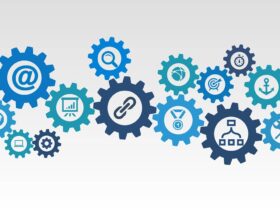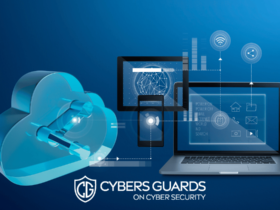While vulnerability management is a well-known method utilized by IT and cloud security specialists to assess the infrastructure and configuration of internal networks, it is not the only vector in the fight against threat actors. Some threat vectors exist outside the safety of firewalls and IAM accounts and are included in the holistic concept of the attack surface. Attack surface management is therefore superordinate to vulnerability management, encompassing many different mechanisms that address an organization’s cyber security.
One of the most critical aspects of cyber security is managing your organization’s attack surface. This doesn’t have to be a manual process wherein specialists trawl through unending lines of event logs and firewall specifications. Platforms like cyberpion.com, for instance, can help organizations actively decrease their attack surface by monitoring high-risk resources on a real-time basis.
In this article, we will break down Attack Surface Management into its essential aspects, discussing each aspect along the way.
Discovering Unknowns
The NIST defines an organization’s Attack Surface as: “The set of points on the boundary of a system, a system element, or an environment where an attacker can try to enter, cause an effect on, or extract data from, that system, system element, or environment.”.
Discovering these unknowns traditionally meant that security specialists needed a thorough understanding of internal systems and components. Any external factors would have been segregated by firewalls or cloud security in the case of SaaS. The scope of this paradigm has shifted in recent years to include all external services utilized by the organization.
Among these new vectors, we can identify public cloud services, software from third-party vendors, and complex social engineering attacks, to name a few.
As part of the threat discovery cycle, cyber security specialists must continuously monitor their attack surface to discover external assets and map them into the existing model of the organization’s Attack Surface.
This assessment must be carried out regularly, if not in real-time, as threat actors move fast. In terms of cyber security, oversight could devastate the organization.
Threat investigations
On the other hand, threat investigations rely on a comprehensive mapping of the organization’s attack surface. During this phase, security specialists analyze each detected attack surface. The findings of such analysis would then be scrutinized and prioritized.
Prioritization eliminates risks that can be mitigated with minor intervention and highlights crucial risks that must be dealt with as soon as possible. By having an action list to address cyber security, specialists can start planning and putting remedial processes and policies in place to address such critical risks.
This is often achieved through incident response tools and Security orchestration, automation, and response, solutions.
An effective method of remediating such discovered risks is to employ an organization-wide Zero-trust paradigm. With this paradigm, even if threat actors gain access to your ecosystem, their access would be severely limited depending on the access they gained during the breach.
The need to Attack Surface Management
Attack surface management is a crucial part of cyber security. It simply identifies digital assets and weaknesses in real time. This is an essential component of effective cybersecurity and can considerably reduce the chance of data breaches. A threat actor needs one weak point in your organization’s connected services to execute an attack. A data breach could be devastating, incurring crippling litigation and loss of industry reputation.
In Conclusion
Organizations cannot defend their ecosystems because they don’t understand their environment’s reach. At its core, attack surface management addresses this holistic need to know exactly what needs to be controlled and safeguarded. The pivotal role of real-time analytics cannot be overstated. A real-time monitoring tool that can scrutinize the organization’s ecosystem every hour will dramatically improve any attack surface management effort. The unfortunate truth is that you cannot manage if you are unaware of it.
Regarding vulnerabilities being introduced into the attack surface by employees, organizations should take responsibility for educating users about the risks they might introduce. This will always be the first line of defence.










FIND US ON SOCIALS